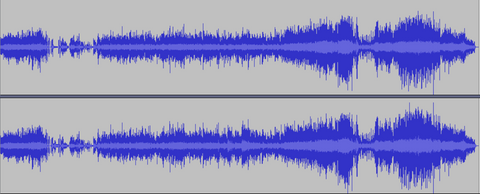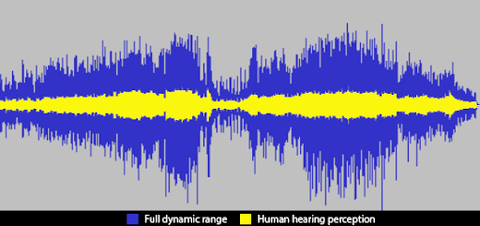
Audeze Artists 2025 Grammy Winners

The Audeze Artists of Metropolis Studios

Andrew Scheps has spent over 35 years in the industry and is a 3x Grammy award winning Mixer/Producer/Engineer/Label Owner/Software Developer whose credits are ridiculously long and star-studded.

Lee Ranaldo, musician, visual artist and writer, co-founded Sonic Youth in 1981. He played in Glenn Branca’s early ensembles and symphonies, 1980-1984, and has been active both in New York and internationally for over forty years as a composer, performer, collaborator and producer, also exhibiting visual art at galleries and museums worldwide, and publishing several books of journals, poetry, and writings on music.
May 21, 2019
Let’s Pretend We’re Married
Take a quick flight of fancy with us, and imagine that you’re looking for your first pair of true audiophile headphones, and have decided to give our LCD-2s the first seat in your pantheon of high-fidelity finery (good choice!). One thing you might have read is that we recommend using an adequately powered headphone amplifier for the most blissful sonic experience. You’ve perused all the literature about how LCD-2s have an impedance of 70 Ohms and their sensitivity is 101dB at 1mW, with a max SPL of >130dB and... and… you can take a breath if you want. This is one of the more complex subjects headphone fans have to deal with, and something even hardcore enthusiasts get confused about. We’ll do our best to unravel this knot without requiring a degree in engineering.
One of the trickiest things when dealing with power requirements for headphone amplifiers has to do with the relationship between three major factors: the sensitivity of the headphones, the output of the amp, and how much the amp’s output will be resisted by the impedance of those headphones. All of these factors contribute differently to how well a particular amp will drive a given pair of headphones. To understand why these things matter, it’s useful to know not only how loudness, impedance and sensitivity are measured, but also how loudness is interpreted by our brains. This all adds up to why you might need extra power from an amplifier, even if it’s already producing adequate average loudness.
Good And Bad, I Define These Terms
Real quick, let’s get a few loose definitions out of the way:
Sensitivity is often misconstrued, and impedance is rarely explained thoroughly, as they are very complex issues… so read on!
Sensitivity is measured by applying one milliWatt (mW) of power to a pair of headphones while playing a sine sweep (a smoothly curved range of pure frequency tones). This sine sweep will generally produce tones from the lowest end of the audible frequency spectrum to the highest-- in other words, all the frequencies most humans can hear. The SPL (loudness) produced by the headphones at a given frequency with a set amount of power is known as its sensitivity, and for headphones the generally accepted standard is to use one kiloHertz (kHz) as the sensitivity measurement frequency.
Back to our LCD-2s and their sensitivity level of 101dB @ 1mW. You might then assume, knowing the nature of sensitivity, that you only need 1mW of power to drive that pair of headphones up to 101dB. Plenty loud, right? While this is technically true, it’s only one part of the story. The main reason for this “part truth” involves the nature of sound and how humans hear it, but is further complicated by the headphones’ impedance curve.
There’s No Such Thing As The Real World
In the real world, sound is very rarely a smooth, clean wave, like a sine sweep. It turns out that real-world sounds are extremely hard to reproduce in playback and recording, but they can be simulated fairly realistically by well-made recordings. If you’ve ever seen a graph of a well-recorded musical sound wave, you know what we mean: they’re jagged, irregular things with myriad peaks and valleys, and the entire “wave” seems a jumbled mass of highs, lows, and everything in between. One of the main things to consider when talking about real sound waves is that they produce what are called transients, while a sine sweep does not.
A transient, in simple terms, is a spike in the volume of a given frequency range, which is typically the leading edge or “attack” of a sound (like a drum hit), which happens over a very short span of time and at a much higher loudness than the average audio. The image below is a good example, which is a jazz tune called “Black Arthur’s Bounce” by the Mark Dresser Seven (used by permission). Note how the tune starts at a reasonable level (on the left) with some fairly distinct transient peaks, but as it gets louder toward the end (at the right), there are some pretty serious transient peaks happening.

The power required to produce these increases in peak loudness is not linear as might be assumed, but is measured on what’s called a logarithmic scale. This means that for each peak loudness increase of 10dB, you need 10 times more power to produce it. So the simple math looks like this: if a transducer (AKA the driver in a headphone, it’s what vibrates the air to convert electrical energy into sound) can produce peaks of 101dB with 1mW (like our LCD-2 above), it would take 10mW to make it produce 111dB peaks, 100mW for 121dB peaks, and 1000mW for 131dB peaks. You can see how this quickly adds up to fairly high power needs for recordings with large dynamic peaks.
Here’s why that’s important for reproducing transient sounds: transients can have loudness peaks of 30, 40, or even 50dB greater than the average SPL. Knowing what we do about logarithmic scales, this translates into current requirements which are FAR greater than what’s needed to simply reproduce an average SPL. If an amp can’t supply enough power to reproduce those large peaks, it will “cut off” the transients. This is known as clipping, which is a mode of distortion in audio, and is very, very bad for accurate dynamic sound reproduction. Clipping can sound mild, like someone just sanded off the transient peaks, or it can sound harsh, like they’re sanding your ear drums. Either way, it’s not pretty or accurate
Referring back to “Black Arthur’s Bounce” above, a lower-powered amp may have an OK time with the first half of the tune, but will most likely end up clipping a lot toward the end. The name of the game is to articulate those dynamic peaks as accurately as possible without clipping the amp, in order to preserve the full dynamic range of the recording. This is why we recommend an amp power rating that exceeds that needed to simply “produce sound” in the headphones-- an amp needs to provide a much greater amount of power to be able to reproduce the transient peaks found in well-recorded audio. This extra power is also called headroom.
Below is an image that shows clipping of “Black Arthur’s Bounce” when sufficient headroom is lacking. The red areas are marked as clipped and will sound distorted to various degrees as mentioned above-- the more red, the more distortion will be present.

Well It’s All In Your Mind
We know what you’re thinking. “130dB is loud enough to destroy my hearing! Why would I want to reproduce those peaks if it’s going to leave me deaf?” It’s important to understand that although the loudness of transient peaks may be far beyond what would normally be considered healthy for hearing, these transient SPLs last only a few milliseconds and as such, are not hazardous to your hearing. More importantly, the way your brain interprets sound, the perceived loudness is actually at a much lower level, because the peaks are “rounded off” by your brain during that time. Human hearing tends to perceive transients as lower in loudness than they actually are, and the transients are “smoothed” by our perception. Keep in mind that these are not average levels, but peak levels, and our brains may only perceive a 120dB peak as 90 or 100dB (or even less, but that’s getting really complicated). Below is an image approximating how human hearing smooths the peaks. The yellow area represents the average loudness level as the brain perceives it, while the blue area shows the full dynamic range of the transient peaks.

Raw Power, It Can’t Be Beat
Producing those high peaks and low valleys is crucial in reproducing sound in an accurate and transparent way. If an audio system can reproduce those loud transient peaks accurately and without clipping, its dynamic headroom is sufficient. This means that with good recordings, transients can be presented closer to how they are in “real life” (whatever that means). This is sometimes called “jump factor” and is what helps us believe that something like a recorded hand clap or drum hit might sound real. To get that, you need two things: fast, detailed transducers (an Audeze specialty), and an amp powerful enough to make the diaphragms move with enough speed to reproduce those loud transient peaks.
The last piece of our power puzzle comes from a transducer’s impedance (we told you this was a complicated subject!). In very simplified terms, impedance is a measure of resistance to the supplied voltage through the voice coil of a transducer at a given frequency. This is not the entire story, but is enough to get a rough picture of what’s at play, which generally boils down to this: the higher the driver’s impedance, the more voltage is needed to reach a high loudness level. It naturally follows that it’s easier for an amplifier to provide the voltage required for transient peaks if a transducer has a lower impedance. Here’s where we get back to that thing we mentioned earlier about impedance being measured at a specific frequency….
One thing that sets Audeze headphones apart from dynamic driver headphones is that our transducers have a flat impedance curve. This means that our headphones will resist that voltage at nearly the same level regardless of the frequency. This in turn results in a smoother sensitivity curve, which means better accuracy of sound reproduction as there are no frequencies that demand more power to produce the transients. Most dynamic drivers have a large resonant peak in their impedance curve, which results in poor control of the cone movement in those resonant frequencies. Our flat impedance curve is one of the reasons Audeze headphones sound more transparent, resolving and neutral across the frequency spectrum than dynamic cone driver headphones.
Won’t You Get Hip To This Timely Tip
To summarize and break this all down a little more simply:
a) Your brain “rounds off” sharp loudness peaks, meaning transient spikes actually need to be much louder than you might think to sound accurate.The overall purpose of a higher powered amp isn’t necessarily to play music as loudly as possible, it’s more about maintaining the accuracy of the loud transient peaks and preserving the recording’s dynamic range. This makes the presentation of those complex musical sound waves as natural and clean as possible without clipping, resulting in high quality, distortion-free sound. Of course, when you relax with your headphones at the end of the day, the thing that matters most is what makes you happy, so go explore, experiment, and find what it means to experience Uncompromised Audio.
